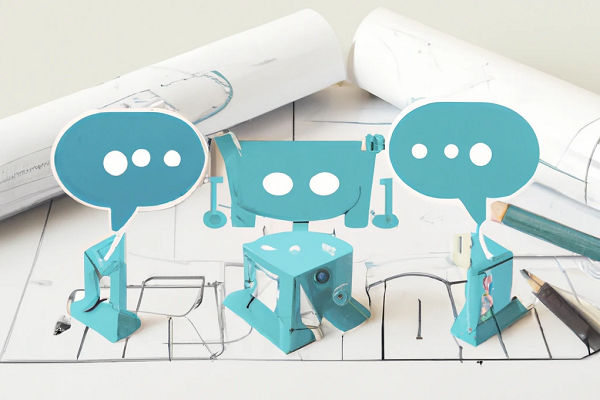How To Build The Right Enterprise Chatbot Architecture

Editor’s Note:This is a guest opinion piece from Srini Pagidyala, co-founder of Aigo.ai, and its “chatbot with a brain” for hyper-personalized conversational experiences.
A stellar customer support system is a kind of new marketing technique these days. Enterprises are trying to ensure that they have tight support systems in place. Major enterprises are exploring bot development initiatives to improve their customer experience. Recent research suggests that 37% of Americans use bots to get a swift answer, while 64% of Americans consider 24/7 availability is the best customer support feature of that enterprise. Several enterprises have embraced chatbots but in silos. This approach works for companies that need to automate only a few tasks; however, this approach does not meet the requirements of big enterprises with several departments and teams.
Large enterprises have different scalability, agility, and cost-effectiveness needs. Due to this, a single bot development strategy is not feasible for enterprises requiring an automated workflow that integrates internal and external ecosystems and uses natural language processing.
Chatbot Architecture: Finalizing a Platform
The backbone of a chatbot is chatbot architecture. The main components of chatbot architecture include- a question/answer system, environment, traffic servers, custom integrations, and front-end systems. There are several things to consider when finalizing a chatbot development platform.
Executing Multiple Tasks with Multiple Chatbots
Choose a platform that offers pre-built, easy-to-deploy bots that can address specific use cases while providing the ability to customize them to handle multiple processes and workflows relating to different customer interactions and workflow offerings.
Multiple Channel Support
Look for chatbot development platforms that allow chatbots to be deployed to multiple channels, including mobile apps, websites, or any other channel the enterprise wants. The chatbot must be a customizable user interface for each channel, be it email, social media, or SMS.
Speech Support and Natural Processing
Choose a platform that provides Natural Language Processing (NLP) training and speech tech support. Both these features make the bot more reliable in understanding user intentions and replying with the most relevant content.
Intelligent Chatbots
Intelligent chatbots collect, harness, and continuously learn from data garnered from various customer interactions. Machine learning is used to develop and maintain natural language processing capabilities that help understand the context of the customer request and related interactions.
Bridge with Platforms
The bot development platform should be able to facilitate sharing of messages between bots, users, and various cross-functional systems. This will include sharing messages stored between bots, users, and systems while logging automatically and categorizing them as success and failure.
Building the Chatbot
The development platform must have an intuitive, web-based tool for customizing and designing the chatbot based on specific use cases, tasks, and channels where it is deployed. The platform should allow developing a chatbot from scratch or reusing components along the development cycle.
Chatbot Development: Formula to Success
There are several ingredients to developing the right chatbot for your enterprise. Some of them include:
Content Makes a Chatbot Worthwhile
The end purpose of a chatbot is to improve customer experiences and assist the service staff. Technology is definitely a conspicuous element of chatbots; however, content plays a more significant role in their success. Although creating knowledge assets is a worthy investment, it often gets overshadowed by technologies like artificial intelligence.
Repurposing Content
Various customer service teams already use most of the content that chatbots require. This may be through telephonic conversations, social media messaging, webchats or emails. This content must be repurposed in a format that is easy for chatbots to understand.
Create Content Relevant to Customer Touchpoint
The motive is to make content that will maximize customer satisfaction by reducing the volume of calls. You need to assess your customers – find out who is calling and why, break down their journey, test contacts across various channels, and conduct research activities like online surveys, emails, and social media.
Making a Channel Pyramid
You can create a channel pyramid; chatbots should be at the topmost level. This means you can relegate a small number of general queries to the chatbot while directing more specialized questions to digital teams. The digital teams can address those queries through webchats and other messaging platforms that form the central layer of the pyramid. After analyzing customer queries and interactions, the pyramid can be flipped, and more questions can be delegated to the chatbot.
Reduce Risks by Pivoting and Involving Practiced Agents
Chatbots have the risk of a bad real-time user experience. They must be pivoted and tested before deploying them directly to customers. These trials can be administered in an innovation hub under the supervision of the contact support center.
Building the right chatbot for your enterprise is not a one-person job. It requires collaboration and coordination of the entire team. The above-discussed tips and tricks will bring you closer to designing the best chatbot for your enterprise’s specific needs and goals.
Amazon Lex Releases No-Code ‘Visual’ Voice AI/Chatbot Platform
Zoom Buys Conversational AI Startup Solvvy to Fuel New Customer Contact Center








